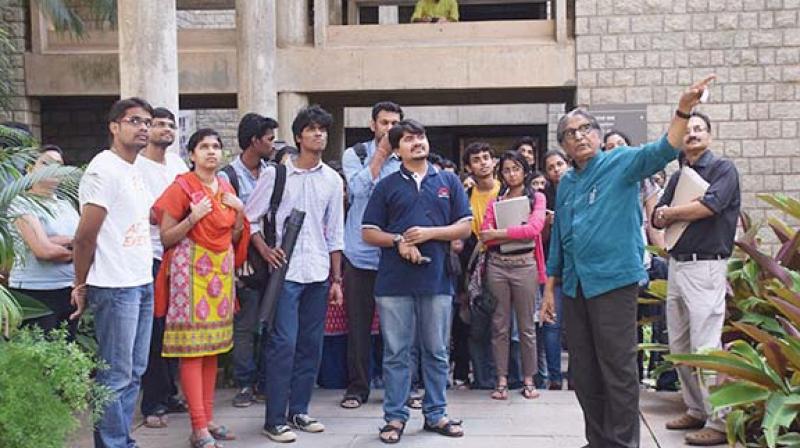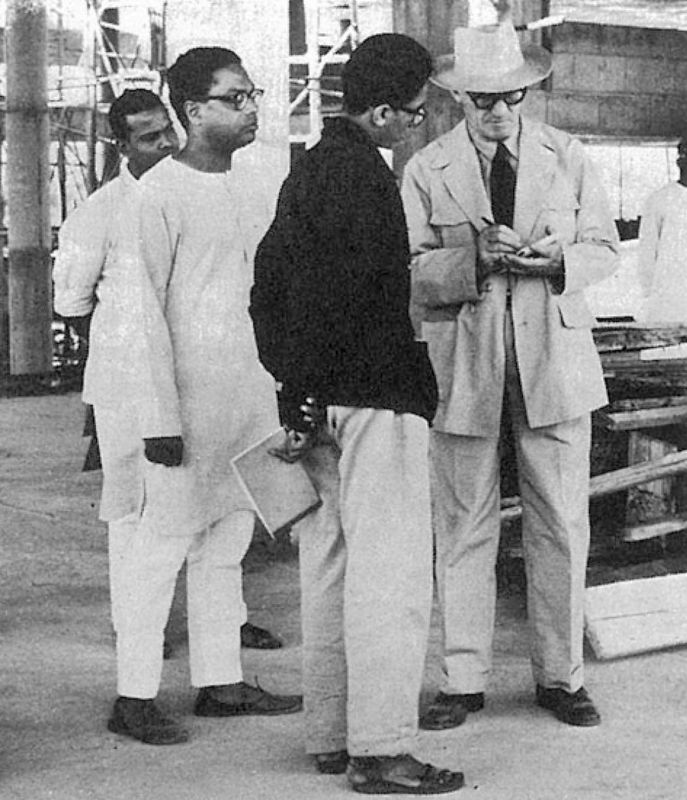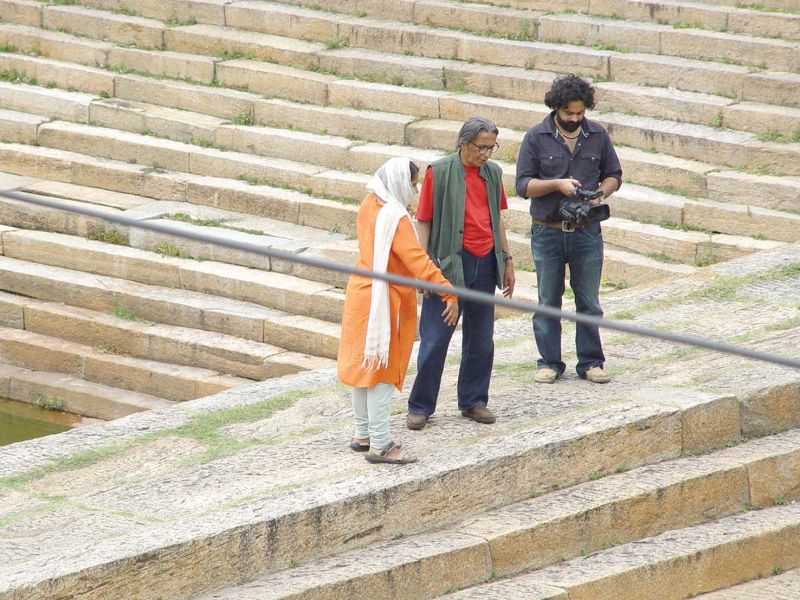Conversations with a master: Finding soul in brick and mortar

Last week, Balkrishna V. Doshi was awarded the Pritzker Prize, colloquially known as the "Nobel Prize" for architecture, becoming the first Indian to do so. The founder of CEPT University and a pioneer in the field of low-cost housing, B.V. Doshi is an architect, an artist and a philosopher all rolled into one. Bijoy Ramachandran, founder, HundredHands and his brother, Premjit, talk to Darshana Ramdev about their journey with making ‘Doshi’, a series of intimate dialogues with the legendary architect
“Sangath is moving together. You never walk alone. And if you prefer to walk with people around, friends around or scholars around, life is richer,” said the legendary architect, B.V. Doshi, in an interview. In any Doshi project, as it happens, every worker is empowered, given freedom to contribute his own influences and perceptions. “The result,” as architect Bijoy Ramachandran, founder, Hundred Hands, puts it, “is not what the typical architect would like. In fact, he may not even call it architecture.” In 2007, Bijoy and his filmmaker brother, Premjit, began work on Doshi, a film made up of a series of dialogues with the legendary architect.
Born in Pune in 1927, Doshi studied at the J.J. College and after a period in London, ended up working as an unpaid apprentice in Le Corbusier's office, Paris. In a few years, he was running the place and returned to India to oversee Corbusier's plans for Chandigarh. In 1962, he began work with Louis Kahn on the Indian Institute of Management, Ahmedabad. His tryst with Bengaluru is the sprawling IIM-B campus on Bannerghatta Road.
The Pritzker jury describes his work as having, "touched lives of every socio-economic class across a broad spectrum of genres since the 1950s." Doshi, much in keeping with the modesty for which is he so well-loved, simply said, "My works are an extension of my life, philosophy and dreams trying to create a treasure of the architectural spirit. I owe this prestigious prize to my guru, Le Corbusier." Doshi, the founder of CEPT University in Ahmedabad, has had many an architect pass through his hands but remains, in spirit, the eternal student, his work a constant amalgamation of different minds, ideas and concepts.
On a Friday afternoon in 2018, as Doshi’s Ahmedabad’s home is no doubt, being laid siege to by the press, the film has gathered new relevance, throwing as it does, deep insight into the workings of a mind many have attempted to encapsulate and understand. Doshi, the film, takes a free-flowing approach, laying great emphasis on its protagonist’s skills as a raconteur and his gift for philosophical thought. Premjit sits cross legged in his little room in 1 Shanthi Road, strumming his banjo as he recalls the making of Doshi, a journey which began almost on a whim.
The year was 1995. Bijoy Ramachandran had just graduated from college and arrived at Ahmedabad, where he was to spend a year working with the legendary architect, B.V. Doshi. The experience was different from anything he had imagined, nothing he had learned in school prepared him for this. "The work of an architect is rooted in society. It's about people and there's a crucial, humanistic angle to our work that is never taught in schools. We learn about abstract maneuvres and theory. Doshi made the practice rich, he is very conscious of the way people use space and of the fact that architecture is the backdrop of life," says Bijoy. "I thought he would make a marvellous subject for a film. He is a great raconteur with an amazing presence."
 a young Doshi with his guru, Le Corbusier
a young Doshi with his guru, Le Corbusier
The dynamism of film lends itself beautifully to architecture, Bijoy remarks, which only made In 2007, Premjit, who had just returned from London, was looking for a project to work on. Almost on a whim, the brothers called Doshi in Ahmedabad with their request and were told to visit the following week. "It was all so unplanned that we didn't have a camera with us when we left," said Premjit. "We had to rent one there." They managed to gather enough material for a seven minute cut. When they returned, a patron and well-wisher, Gautham, the owner of UKN properties, saw the footage and agreed to help out. "He simply asked us how much we needed to get this done. I said I needed a Canon HD Camera, XH, A1. It cost about three lakh at the time. He agreed. That's how we made the 74-minute film."
Over the course of filming, the brothers were made to feel like family. "We would eat our meals with him, we even stayed in his house." The house was always open to guests - "We were in his home once and it happened to be his birthday. All of a sudden, a student waltzes in, wishes him, takes a selfie and then leaves. That's what it's like to be around the man."
The film was shot in three locations - Sangath, his famed studio in Ahmedabad, in Mumbai and here in Bengaluru. "Our conversations revolved around the projects to which we had access, because we wanted to have them as a backdrop as the film unravelled," says Bijoy. They even shot without a script, with Bijoy simply asking Doshi questions and letting him speak. "He digresses, of course, so we get so much out of a simple question. We learn about life and values.”
Doshi’s work is celebrated for its rootedness in culture and heritage, for never giving into trends or succumbing to the obsession with what Bijoy describes as “the pristine object.”The film is divided into seven chapters, each exploring different aspects of Doshi’s voluminous achievements and philosophies.
 Doshi and Premjit during the making of the film
Doshi and Premjit during the making of the film
The music was composed by Premjit, a man of many talents, during his time in London. “I found that those scores were perfect,” says Premjit, picking up his flute to signal, subtly, that the conversation has come to an end. “For some reason, everything fell into place. It was meant to be.”

